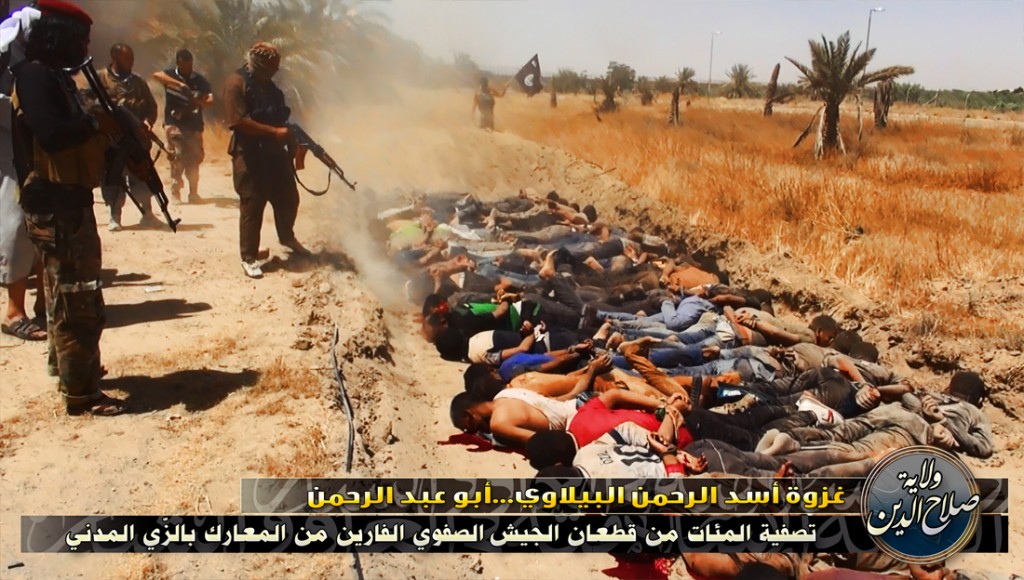
GENEVA — More than 1,000 people, the vast majority of them civilians, have been killed in Iraq this month as Sunni insurgents overtook key areas of the country, the United Nations said Tuesday.
The new findings from the U.N. human rights team in Iraq show the casualty rate from violence and terror already in June is among the highest since the U.S. troop pullout from the country 2-1/2 years ago.
The U.N. team reported at least 1,075 people killed this month across Iraq. That toll included 757 civilians in the Ninevah, Diyala and Salahuddin provinces in northern and central Iraq from June 5-22, as troops led by the Shiite-led government in Baghdad failed to stop the advance of the Islamic State of Iraq and the Levant, or ISIL. It said another 599 civilians were injured.
U.N. human rights office spokesman Rupert Colville cautioned however that the figure “should be viewed very much as a minimum,” and said it included “summary executions” and extra-judicial killings of civilians, police and soldiers who had signaled that they were no longer combatants.
The U.N. team said another 318 people were killed and 590 injured during the same time in Baghdad and areas in the south, many of them from least six separate vehicle-borne bombs. It also is trying to verify “a number of alleged human rights violations” since the ISIL advances in early June, Colville told reporters in Geneva.
But the numbers provide new evidence that Iraq is grappling with its worst surge in violence since the sectarian bloodletting of 2006 and 2007, when the country was pushed to the brink of civil war despite the presence of tens of thousands of U.S. troops.
Colville also said that kidnappings of foreigners and others continue in the northern provinces and Baghdad, including 48 Turkish citizens taken from Turkey’s consulate when ISIL captured Mosul and 40 Indian nationals who had been working for an Iraqi construction company.
But he said 16 Georgians reported kidnapped 10 days ago have been released, and 44 other foreign workers abducted by ISIL when they captured Dawr, near Tikrit, were also freed and returned safely after local tribal leaders negotiated between the Iraqi army and ISIL.
“Tragically some of those who have been abducted have been subsequently found dead, and summary executions also apparently continue to take place,” Colville said.
While the violence has been nowhere as widespread as it was more than a half-decade ago during the U.S.-led international military presence, it is fast-increasing with the Sunni insurgency added to the bombings and shootings that still happen nearly every day. According to U.N. figures, the casualty rate from the violence and terror in Iraq this month is among the highest of the past three years.
The casualty rate is one-third higher than a month ago, when the U.N. said at least 799 Iraqis were killed and 1,108 injured. The dead in May – which was previously the high for 2014 – included 459 civilians, 196 Iraqi security force members and 144 civilian police.
In April, 750 Iraqis were killed and another 1,541 were injured, the U.N. said. That included 470 civilians, 140 civilian police and 140 Iraqi security force members.
The latest casualty figures exceed even last year’s peak, nearly two years after the last U.S. forces withdrew. The U.N. reported that last July at least 1,057 Iraqis were killed and another 2,326 were wounded by terrorism and violence.
The dead that month – during a surge of bloodshed that raised fears of a return to widespread sectarian killings – included 724 civilians, 204 civilian police and 129 Iraqi security force members.